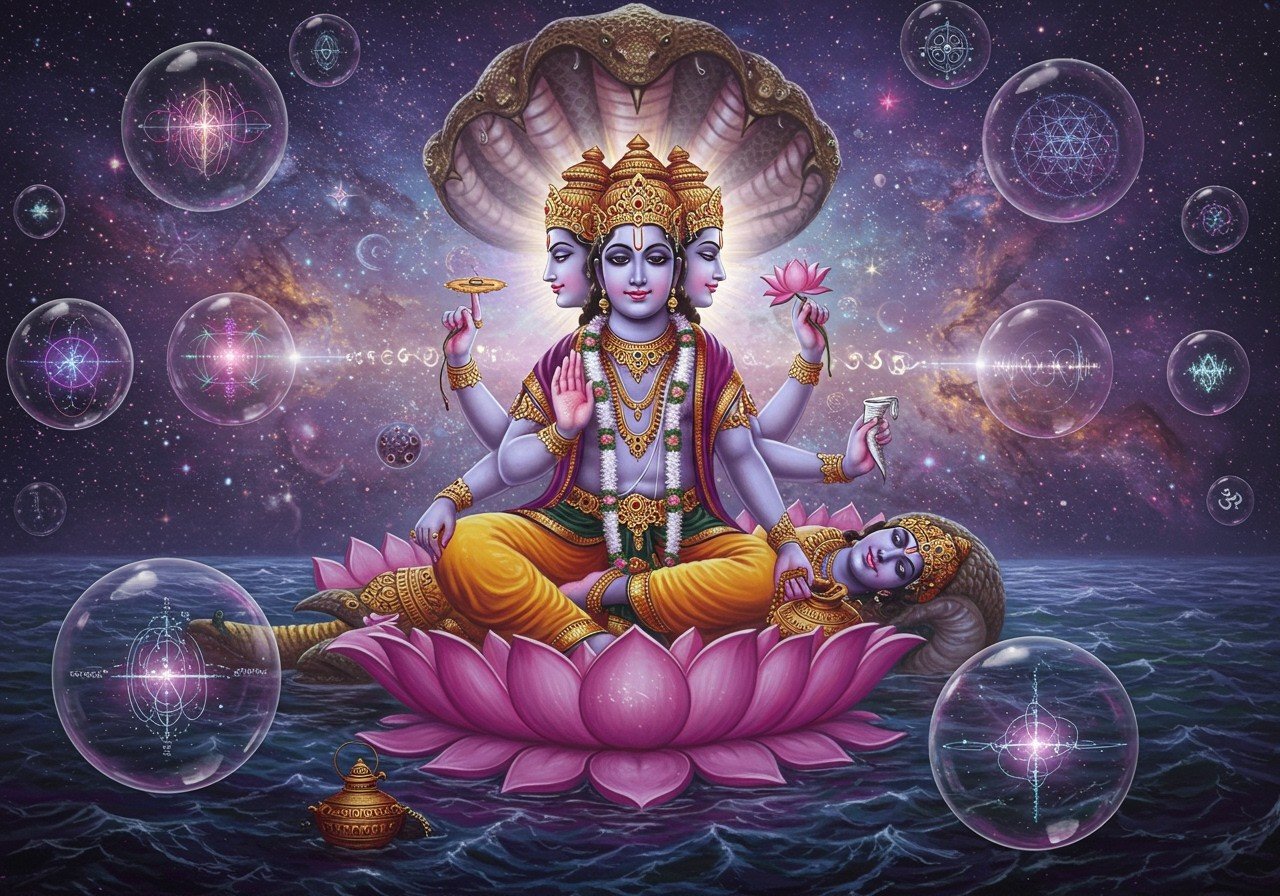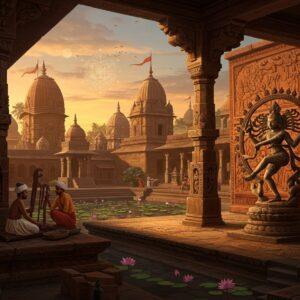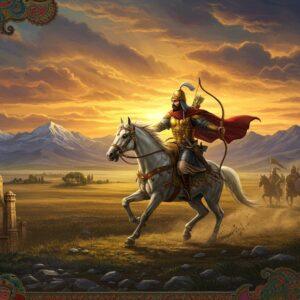
The fascinating intersection of Hindu cosmology and modern physics reveals intriguing parallels in their understanding of the multiverse. Hindu tradition places significant emphasis on cosmology, perceiving the universe as both cyclical and boundless. This exploration delves into the convergence of ancient spiritual wisdom and contemporary scientific thought, appealing to those who value both tradition and modernity. For a deeper understanding of Hindu beliefs and practices, explore our resources on Exploring Hinduism: Core Beliefs and Practices and Hindu Gods and Goddesses: A Complete Guide.
Hindu Cosmology and Its Core Concepts
Hindu cosmology is rich with concepts such as ‘Brahmanda,’ the cosmic egg, symbolizing the universe’s origin. The cyclical nature of time, divided into ‘Yugas‘ (epochs) and ‘Kalpa‘ (cosmic days), portrays time as eternal. Deities like Brahma, Vishnu, and Shiva embody creation, preservation, and destruction. ‘Maya‘ underscores the illusionary nature of reality, which is key to comprehending the multiverse. ‘Loka‘ denotes the multiple realms or planes of existence within Hindu cosmology. To further explore these concepts, refer to our guide on Hindu Temples: Explained – A Guide to Their Significance.
Ancient Hindu scriptures, including the Vedas and Puranas, allude to infinite universes, supporting the multiverse concept. ‘Ananta,’ meaning endless, aligns with the idea of countless universes. The metaphor of the ‘cosmic ocean’ depicts universes emerging and dissolving like bubbles. Each universe operates under its own laws and temporal cycles, echoing modern scientific theories about the multiverse. Learn more about the significance of Hindu rituals with our guide on Hindu Rituals: Significance and Importance and delve into the Sacred Texts of Hinduism with our guide on Sacred Texts of Hinduism: A Guide to Key Scriptures.
Hindu Cosmology Explains the Multiverse
Hinduism’s cyclical multiverse suggests a process of dissolution approximately every 3.1 x 10^14 years, followed by the creation of a new multiverse. This eternal cycle reinforces the concept of a multiverse. Innumerable universes exist concurrently, each with its own Brahma, Vishnu, and Shiva, moving like atoms. The concept of ‘Chidakasha,’ the space of consciousness, allows sages to traverse these multiverses. Explore the concepts of Dharma and Karma in Hinduism through our guide on Dharma and Karma in Hinduism: Explained.
- Cyclic Multiverse: This concept emphasizes the continuous cycle of creation and destruction, with the universe dissolving and regenerating every 3.1 x 10^14 years. This cyclical nature aligns with the idea of a constantly evolving multiverse.
- Innumerable Universes: Hindu texts describe countless universes existing simultaneously, each with its own set of deities and governed by distinct laws. These universes are envisioned as moving like atoms, highlighting their vastness and dynamic nature.
- Layers of Existence (Lokas): Within a single universe (Brahmanda), there are 14 layers of existence, known as Lokas. These range from Bhu Loka (the earthly realm) to Satya Loka (the highest realm) and include realms like Atala and Patala Loka, representing different levels of consciousness and experience.
- Chidakasha: This concept refers to the space of consciousness, which is believed to contain all possible physical universes. Sages can reportedly travel through the multiverse by entering Chidakasha, suggesting a connection between consciousness and the physical universe.
Modern Physics and the Multiverse
Modern physics proposes various multiverse theories, such as the ‘Many-Worlds Interpretation‘ and ‘Bubble Universes.’ These theories suggest the existence of parallel or alternate universes. Quantum mechanics and string theory provide theoretical support for the multiverse concept. Striking parallels exist between these scientific theories and Hindu cosmological beliefs.
Hindu Cosmology’s Relevance in the Multiverse Discussion
Hindu cosmology enriches our understanding of the multiverse by offering philosophical insights that address limitations in scientific models. It fosters a dialogue between spirituality and science, leading to a deeper comprehension of the universe. The emphasis on consciousness and perception in Hindu thought could influence modern interpretations of the multiverse. Ancient narratives offer a holistic perspective that complements scientific inquiry.
Cultural and Spiritual Implications
Hindu cosmology holds cultural significance in modern Indian society. The multiverse concept resonates with traditional beliefs and spiritual practices. Integrating ancient wisdom with modern science influences personal and collective worldviews. This synthesis fosters a deeper appreciation for Hindu narratives, reinforcing cultural identity and spiritual growth.
How Poojn.in Supports Your Spiritual Journey
Poojn.in, India’s leading online store for spiritual and puja needs, provides a wide range of authentic products to support your exploration of Hindu cosmology and spiritual practices. We offer pure copper kalash and panchpatra sets for abhishekam rituals, brass diyas and oil lamps to symbolize enlightenment, sacred threads and mala beads for meditation, pure silver items, genuine rudraksha malas, and copper yantra sets representing cosmic patterns. You can find Bel malas, Tulsi malas, Shiva Lingams, and Adiyogi statues on our website.
Conclusion: Bridging Tradition and Science
Hindu cosmology offers a profound connection to the multiverse concept explored in modern physics. This blend of ancient tradition and contemporary science provides a unique lens through which to view the universe. By embracing both the wisdom of Hindu texts and scientific theories, we engage in a dialogue that transcends time and space. For those interested in deepening their meditation practice, Poojn.in offers guidance and resources on Common Meditation Challenges and Breathing Exercises for Meditation.


